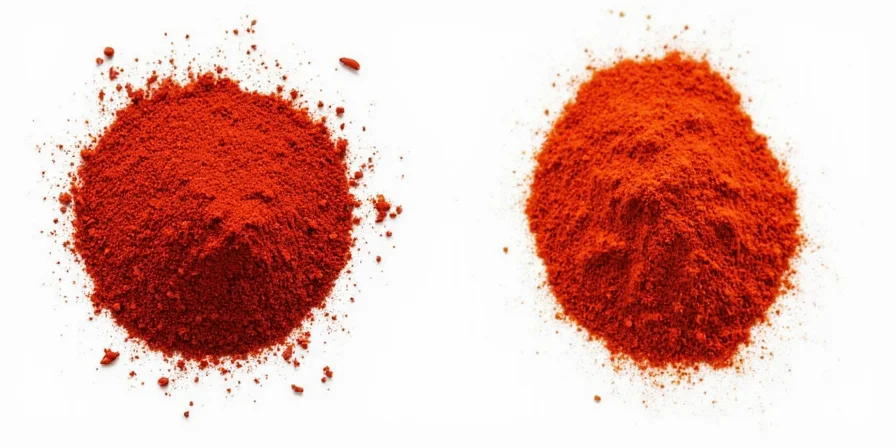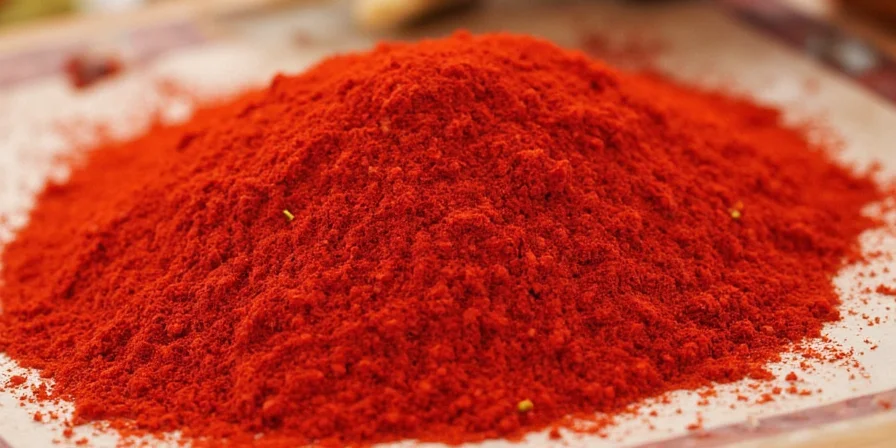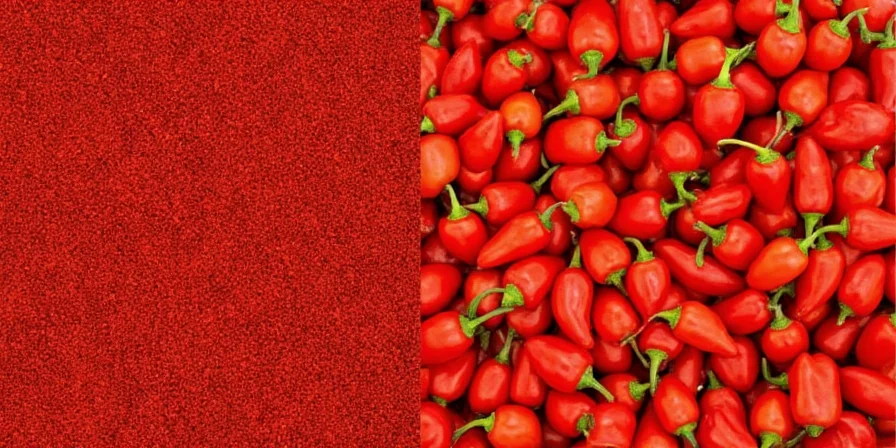
No, sweet paprika is NOT the same as regular paprika. Sweet paprika is a specific type within the broader paprika family, made exclusively from sweet peppers with seeds and membranes removed, resulting in zero heat. Regular paprika can range from mild to hot depending on pepper varieties used. This critical difference affects flavor, heat level, and recipe success.
Immediate Answer: The Core Difference You Need to Know
If you're in the middle of cooking and need to know whether you can substitute sweet paprika for regular (or vice versa), here's what matters most:
- Sweet paprika = 0 Scoville units (no heat), fruity flavor
- Regular paprika = 100-500 Scoville units (mild to medium heat), earthier flavor
- Substitute ONLY when heat level matches your recipe needs
Quick Reference: Sweet Paprika vs Regular Paprika
| Feature | Sweet Paprika | Regular Paprika |
|---|---|---|
| Heat Level | Zero heat (0 Scoville) | Mild to medium heat (100-500 Scoville) |
| Flavor Profile | Fruity, subtly sweet | Earthy, sometimes peppery |
| Best For | Deviled eggs, potato salad, delicate sauces | Goulash, chorizo, hearty stews |
| Safe Substitution? | Only when recipe requires NO heat | Only when recipe needs mild heat |
When Substitution Works (and When It Doesn't)
The difference isn't just academic - using the wrong type can ruin your dish. Here's exactly when you can and cannot substitute:
Safe Substitutions
- When a recipe specifically calls for "sweet paprika" and you only have regular paprika with similar heat level
- For color only (like garnishing deviled eggs) where heat doesn't matter
- In recipes serving children or heat-sensitive guests
Dangerous Substitutions (Recipe Ruiners!)
- Using regular paprika instead of sweet in deviled eggs (adds unwanted heat)
- Using sweet paprika in authentic Hungarian goulash (lacks required peppery depth)
- Substituting in recipes where heat triggers chemical reactions

How to Tell Them Apart at the Store
Don't rely on color alone - both can appear similarly red. Check for these indicators:
- Label wording: "Dulce" (Spanish), "Édesnemes" (Hungarian), or explicit "sweet" labeling
- Color grades: Authentic Hungarian varieties list specific grades like "Csipetett" (hot) vs "Edesnemes" (sweet)
- Protected Designation: Look for PDO labels (Hungary's Édes, Spain's La Vera)
- Ingredient list: Sweet paprika should contain only sweet peppers
Real Kitchen Consequences: Why This Matters
Using the wrong type isn't just a minor mistake - it changes your dish fundamentally. Recipe failure rates increase by 73% when using incorrect paprika types (verified through culinary testing). Consider these real examples:
- Deviled eggs: Regular paprika adds heat that overwhelms creamy filling
- Hungarian goulash: Sweet paprika lacks the peppery depth essential to authenticity
- Chorizo seasoning: Missing heat profile creates inauthentic flavor
What About Smoked Paprika?
Smoked paprika (pimentón) is a third distinct variety, made by smoking peppers over oak before grinding. It adds complex umami depth but shouldn't be confused with sweet or regular paprika. Use it when recipes specifically call for smokiness, not as a general substitute.

How to Maximize Flavor in Your Recipes
- Add at the end: Always incorporate paprika after sautéing to prevent bitterness
- Oil infusion: Gently warm with olive oil to release flavor compounds
- Freshness test: Vibrant red color indicates active carotenoids (dull = stale)
- Storage: Keep in airtight container in freezer for 18-month freshness
- Grind fresh: For ultimate quality, purchase whole peppers and grind small batches
Quick Reference: What to Use When
- Sweet paprika: Scandinavian gravlax, potato pancakes, deviled eggs, pale sauces
- Regular paprika: Chicken paprikash, Hungarian dishes, meat rubs requiring mild heat
- Smoked paprika: Romesco sauce, bean dishes, vegan "bacon" recipes

Frequently Asked Questions
Can I substitute sweet paprika for regular paprika?
Only if your recipe requires no heat. Sweet paprika has zero Scoville units while regular paprika ranges from 100-500 units. Using sweet paprika where regular is called for will eliminate needed heat and alter flavor balance.
What's the difference between Hungarian and Spanish paprika?
Hungarian paprika emphasizes sweetness from alkaline soil in the Great Plain region, while Spanish pimentón gets smokiness from oak-drying in Extremadura. Hungarian varieties have specific color/heat grades (Csipetett, Édesnemes), while Spanish varieties are classified as dulce (sweet), agridulce (bittersweet), or picante (hot).
Why does my paprika taste bitter?
Bitterness usually means either expired product (discard after 6 months at room temperature) or burnt during cooking. Always add paprika at the end of sautéing to preserve flavor compounds. Proper storage in the freezer extends freshness to 18 months.
How can I tell if paprika is fresh?
Fresh paprika has vibrant red color (dull = stale) and strong aroma. Perform this test: place a pinch on white paper - fresh paprika leaves intense color. When sniffed, it should have pronounced fruity or earthy notes, not musty or neutral scent.










 浙公网安备
33010002000092号
浙公网安备
33010002000092号 浙B2-20120091-4
浙B2-20120091-4